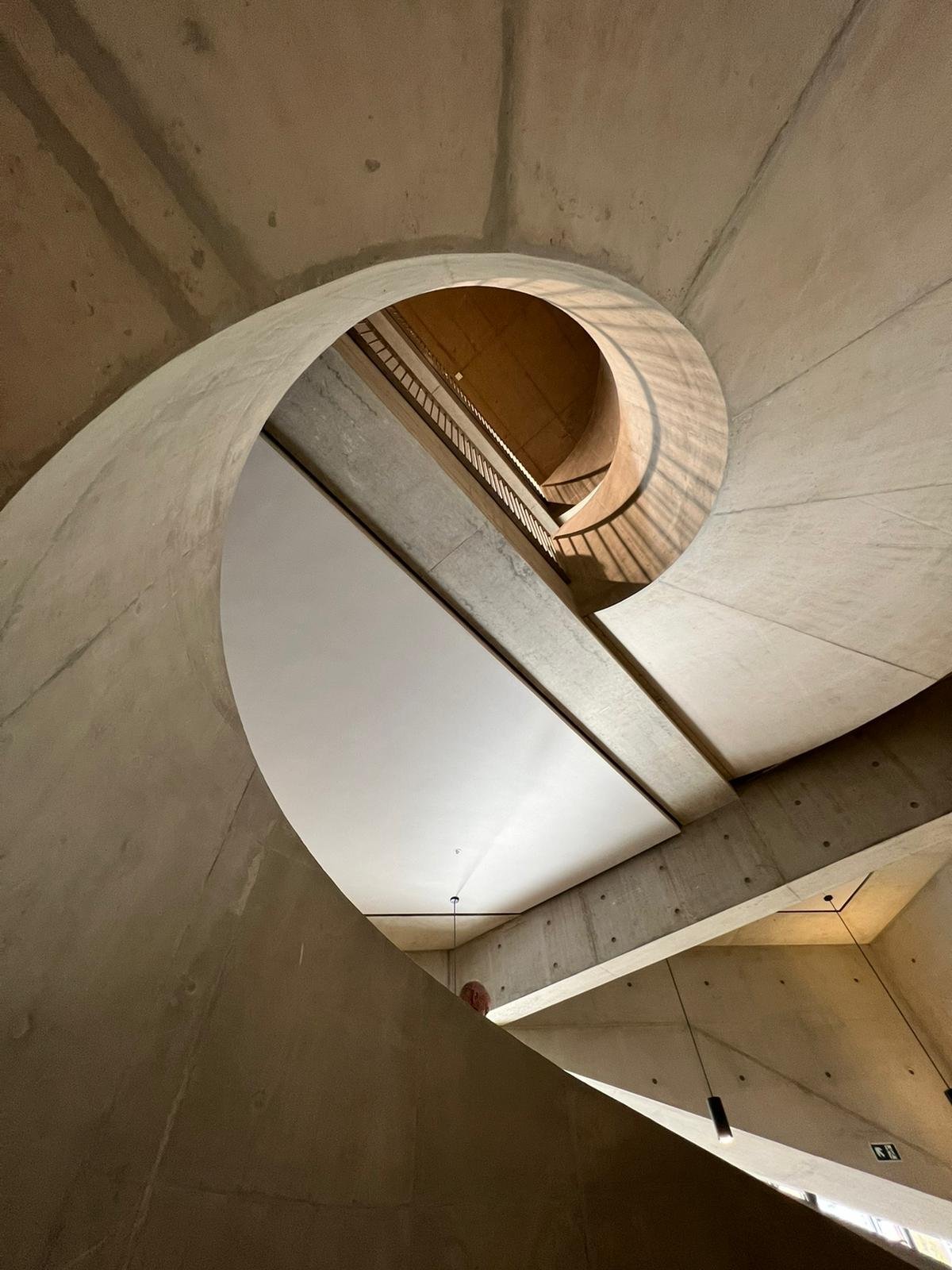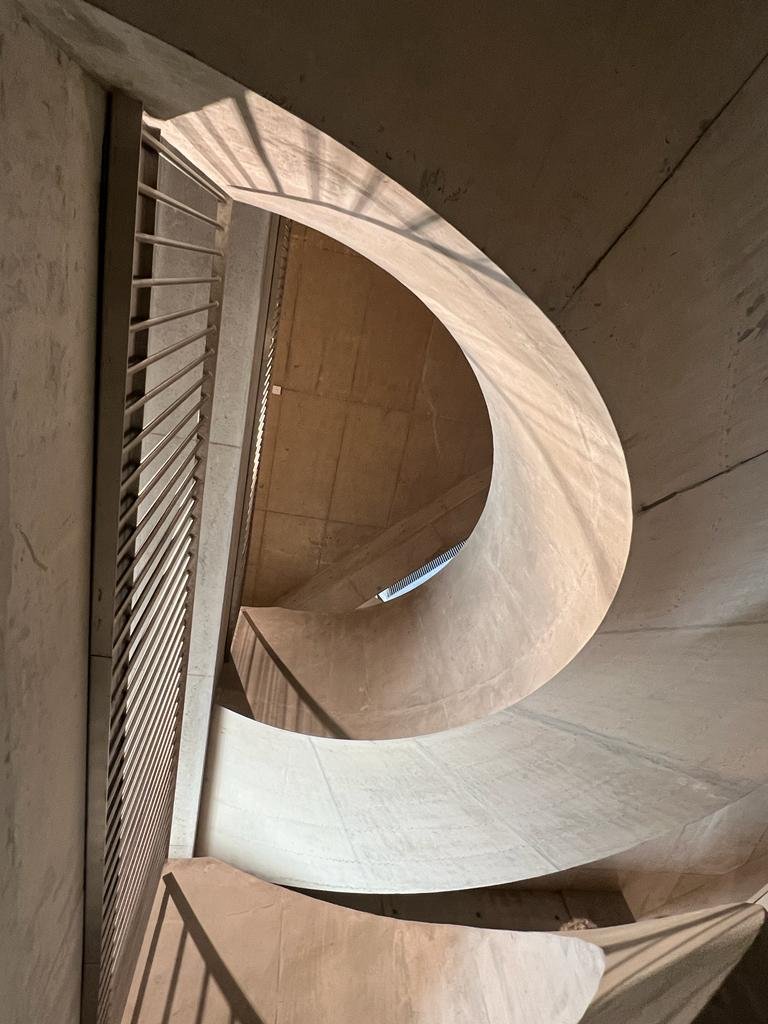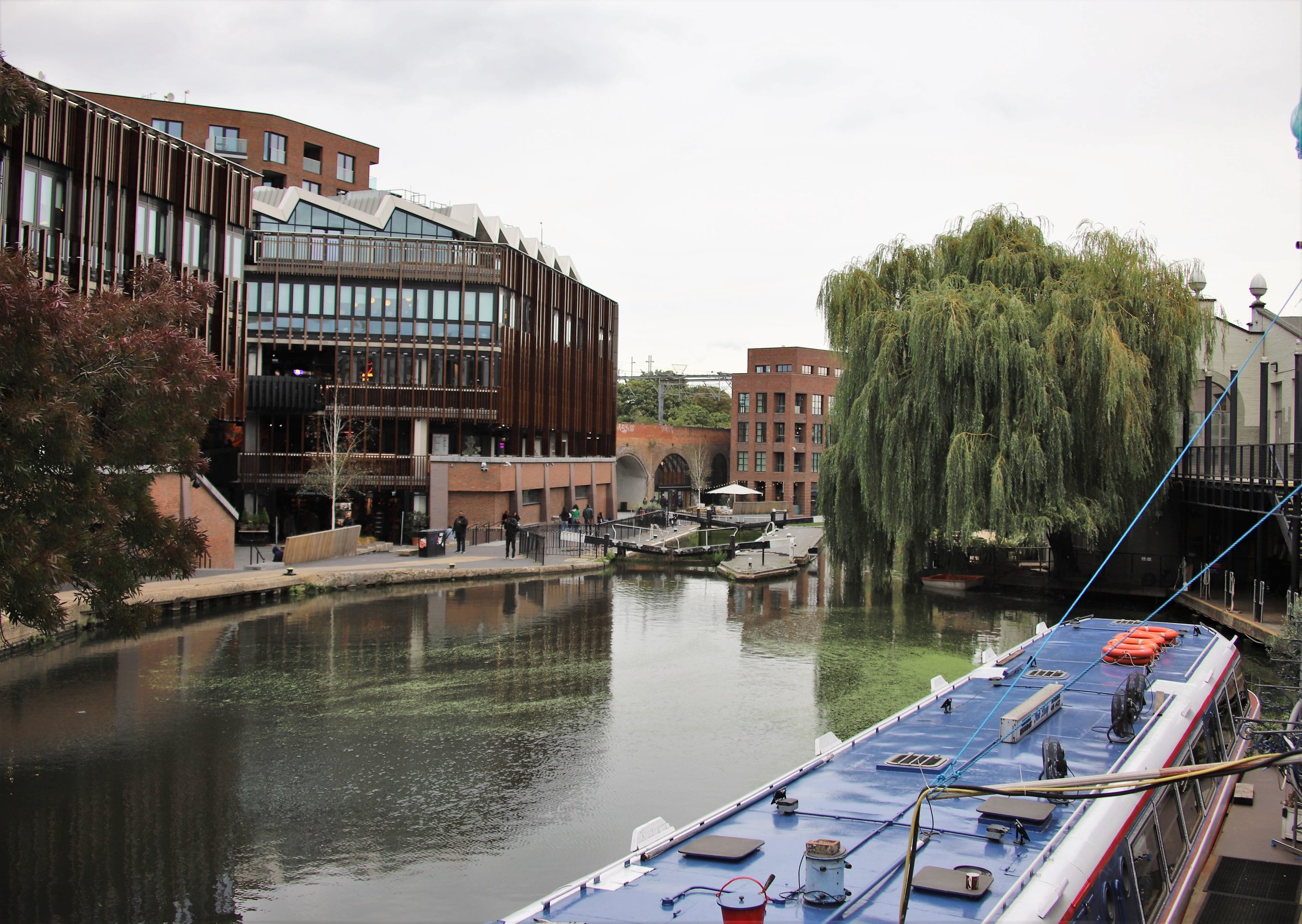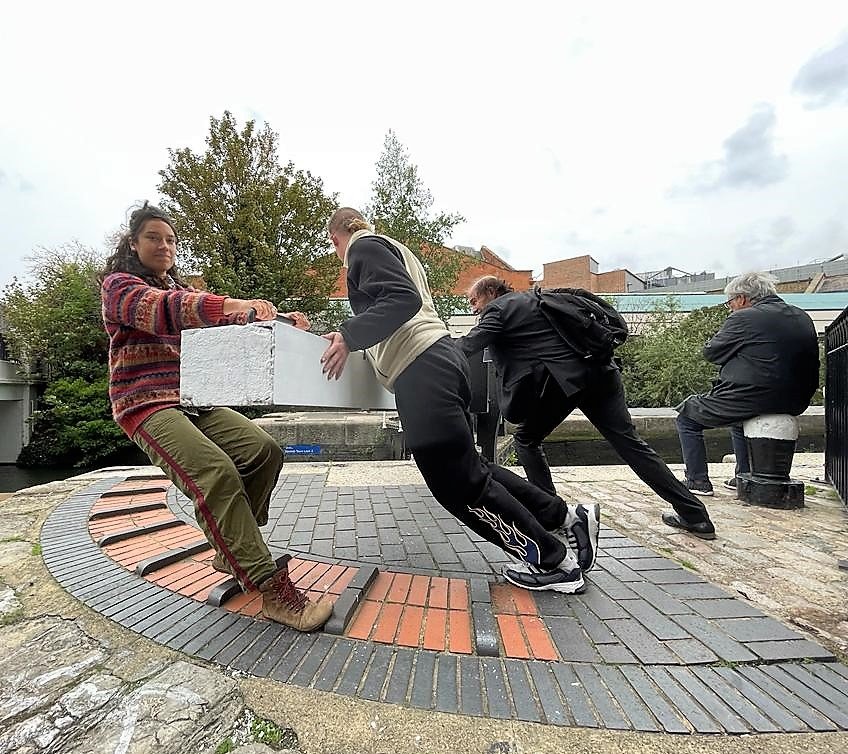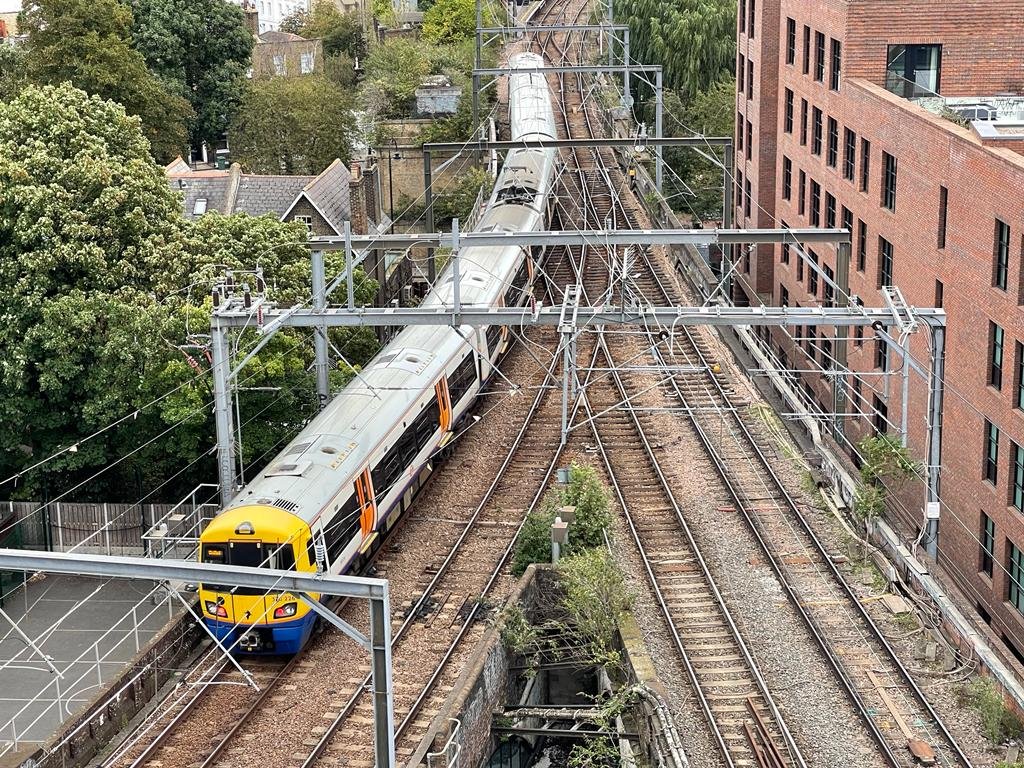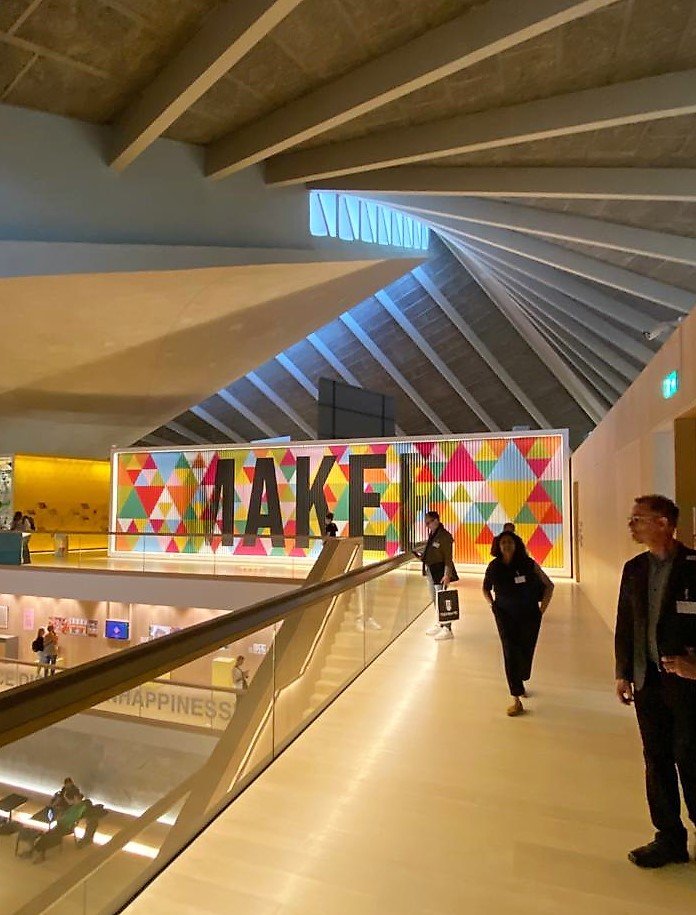7 - AIA International LONDON 2022 - Day 3 – Colour, the City & Beyond
Fiona Mckay
Photo credit: E Fitzpatrick (AIA UK)
Sunday, 2 Oct 2022, was Marathon Day, meaning more closed roads, more traffic congestion, more people piling into central London, but also adding a cheery, sporty atmosphere to London’s historic financial district - the City - which on a weekend can otherwise be drearily depopulated.
All Day Venue – Convene at 22 Bishopsgate
22 Bishopsgate is one of London’s – and Europe’s - newest and tallest buildings. It was described by the London Times in 2018 as the City’s ‘smartest building’. Convene at 22 Bishopsgate proved to be the perfect venue for a day filled with seriously good talks.
Photo credits: (top) S Gold (AIA I) and (bottom) L King (AIA UK)
Talk – ‘Beyond the Surface – Transformative Colour’, Fiona McLachlan, Professor of Architecture Practice, UNIVERSITY OF EDINBURGH
Photo credit: P Salathe (AIA CE guest)
FIONA McLACHLAN was selected by AIA CE as an inspirational speaker on the topic of colour. In introducing her, Bari Wetmore Salathe (AIA CE) related how McLachlan was put forth by Sheila Farouk, an AIA CE emerging professional who was unfortunately unable to attend the Conference.
Colour is a topic dear to ALL designers, but – admittedly – it is often sadly neglected. Perhaps, suggested McLachlan, ‘architects are nervous about colour’? Then, to dispel any idea that using colour was EASY, she baldly stated, ‘get this from the start – colour does not make bad architecture good’. Fundamental to understanding colour is to know that ‘colour is dependent on context’. Surely that maxim is akin to ‘water runs downhill’. It should never be forgotten.
Giancarlo Alhadeff (AIA CE) summed up the mood of the audience most eloquently when he saluted McLachlan at question time with a simple ‘THANK YOU’. She certainly had the audience on her side so that - all through break time - everyone could only talk COLOUR, showing off their most extravagant contributions.
Talk – ‘Exchange Place’, Deborah Saunt, Co-Founder, DSDHA
Photo credit: L Petruso (AIA UK)
DEBORAH SAUNT, from DSHDHA, ran through her various urban design successes and kept the audience fully on her side. The overall mood can accurately be described as one of laughter and bonhomie.
Saunt started with poignant pictures of stragglers huddled around the edges of an empty, circular plinth and an end-of-the-week, testosterone fueled drinks party at the pre-improved Broadgate Bearpit.
Photo credit: G Alhadeff (AIA CE)
‘Let’s get out of our silos and invest in landscaping!’ was Saunt’s call as she talked through her design methodology for a safer more sociable Bradgate Exchange Place - including CCTV footage, movement studies, ‘smile tests’ and student interviewers, etc.
Is landscaping cost effective? Yes, it appears that the improvements at Exchange Place paid for themselves through increased square footage rents. ‘People’, says Saunt, ‘divert to greenery’.
Talk – ‘22 Bishopsgate – A Vertical Village’, Karen Cook, Co-Founder SPICE
Photo credits: H Giblin (AIA CE)
KAREN COOK – architect of 22 Bishopsgate – has been a member of AIA UK since the early 1990s, and the Chapter has watched with pride as her career progressed over the last three decades. She is now one of AIA UK’s most illustrious and well known designers and co-founder of one of London’s newest architectural practices, SPICE.
Her talk included a technical summary of 22 Bishopsgate’s history, design, sustainability credentials and construction, and highlighted aspects that set it apart from other high rises – particularly the humanistic touches. ‘Quality of living’ - even at the scale of 12,000 occupiers and 62 floors – was an ever paramount consideration. The project has been honoured by the International Well Building Institute in terms of ‘air, water, nourishment, light, fitness and comfort’ control.
Special features include among others: A tenant’s gym with climbing wall; retreat spaces; a free public viewing gallery; a private food market (open to public in non-office hours); a large cycle park and associated changing areas; personalised control of one’s workspace environment….
The developer’s approach to its tenants is also unusual. Construction proceeded without a major pre-let. Instead, the developer concentrated on multi lets for smaller – even start up - companies, with all tenants treated equally.
Panel Discussion – ‘Façade Design in the Age of Sustainability’, Karen Cook, Co-Founder SPICE; Claudia Farabegoli, Design Director, THORNTON TOMASETTI; Julian Sutherland, Building Services Partner, CUNDALL; Chair - Cedric Hamers, DOW.
Photo credit: K Storr (AIA UK)
In a departure from the typical Conference talk format, after lunch focused on a panel of experts addressing aspects of façade design. As CEDRIC HAMERS, representing the Conference sponsor, Dow, was unable to attend at the last minute, LESTER KORZILIUS (AIA UK) took over as chair.
Although Dow was not in attendance, a video which highlighted its newly developed, carbon neutral silicone was presented on its behalf. Dow emphasised that it aims to have its entire business carbon neutral by 2050. Currently, it takes a project-by-project approach to offset silicone’s carbon footprint, with audited Carbon Certificates coming from upstream operations.
KAREN COOK spoke first, describing in detail 22 Bishopsgate’s full-height triple-glazed façade with internal blinds controlled by the Building Management System - in short, a closed cavity system. The panel debated the merits of a traditional insulated glass façade compared to a closed cavity system. Surprisingly, the two approaches are nearly equal in life-cycle carbon usage.
CLAUDIA FARABEGOLI – who has more than 20 years’ experience in façade design – also talked about the life cycles. She made the somewhat challenging assertion that timber facades, and the use of timber generally, is not necessarily a sustainable approach to material selection, given that - at the end of a building’s life - timber is typically burned, releasing all embodied carbon back into the atmosphere.
JULIAN SUTHERLAND, who spearheads sustainability efforts at Cundall, identified a 7-step program to achieve Net Zero Carbon. He used the Grade I listed Palm House at Kew Gardens – a Victorian, single glazed greenhouse currently being renovated – to highlight several steps, including façade replacement, improved lighting, and heat pumps. Fortunately, heritage officers are now becoming more flexible on how historic buildings might be adapted to suit net zero aspirations.
Talk - ‘Quay Quarter Tower: Lessons in Transformation from Sydney to London’, Audun Opdal, Senior Partner, 3XN
Photo credit: S Gold (AIA I)
AUDUN OPDAL addressed another aspect of the sustainability debate – what to do with existing, ofttimes obsolete - building stock? His personal, practical solution is to ‘demolish, retain and expand’ – save energy, save carbon, save time by revitalising ‘old buildings with good bones’.
He provided multiple examples of how to do this – from simple to complex projects. His most complex example, Sydney Quay Quarter Tower, looked like a project that could have gone seriously out of control during construction, but Opdal managed to pull it off by relying – as he recommends - on a strong, collaborative team of designers, engineers, and specialist consultants.
Not all old buildings can be saved, so Opdal’s advice for the future is ‘to design new buildings that will be easy to change’.
Opdal is from Denmark, but he has lived long enough in London to know that the English can imbue words such as ‘nice’ and ‘interesting’ with subtle insults - ‘Oh, that’s interesting…..’ - sounds good superficially, but can be downright insulting.
So, when he described the subject of his talk as ‘interesting’, he had to clarify that he meant ‘interesting’ in the Danish sense of – well – just interesting, without recourse to quotation marks.
Opdal’s talk was the last of the day and last of the Conference, but - for those attendees who found AIA International LONDON 2022 truly interesting - there is more to look forward to at AIA International MEXICO CITY 2023.
Please see below Jose Luis Salinas’ (AIA I) video preview of next year’s Conference – 2 to 6 Nov 2023.
Fortunately, Salinas did make it back to Mexico - complete with his wayward luggage - and he can now concentrate on his upcoming year of detailed planning.
Written by: Lorraine D King, AIA (aka Secretary@AIAUK.org) with input from L Korzilius, FAIA, on the Facades Panel.

































